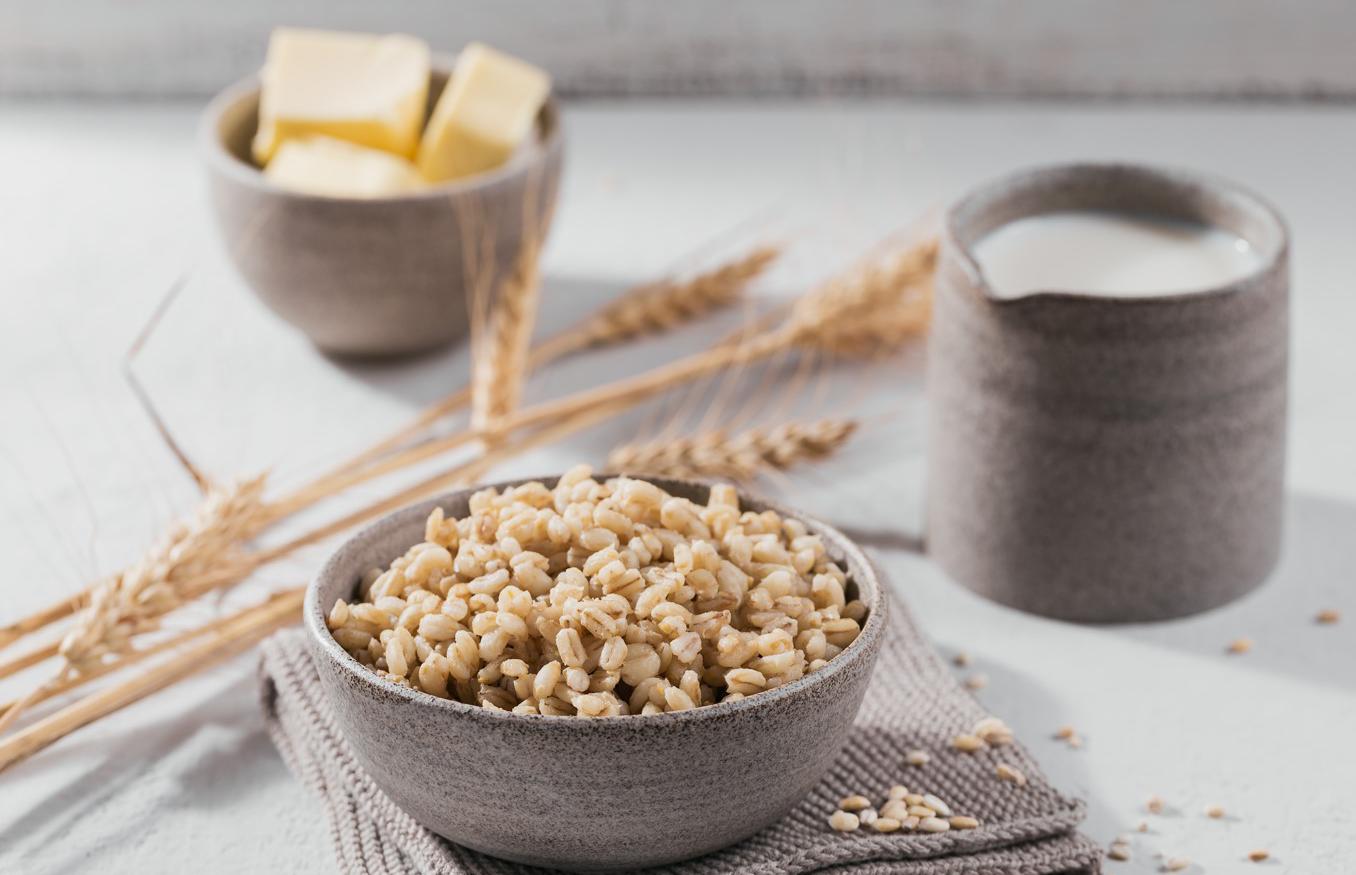
- What you need to know
- Calories and nutritional value
- Benefit
- Harm
- Expert commentary
Maria Volchenkova, nutritionist at BestDoctor;
Natalie Makienko, nutritionist, psychophysiologist, founder of the Natural Diet healthy eating center.
What you need to know about barley porridge
Barley adapts well to different weather conditions
Barley porridge is a dish made from crushed barley grain. Barley belongs to the cereal family. It served as the basis for making bread in ancient times, as well as in the Middle Ages. Today barley is the fourth most commonly grown cereal crop in the world after wheat, rice and corn (1). It is also used as animal feed and a source of malt for alcoholic beverages, most notably beer.
Barley adapts well to different weather conditions and is suitable for cultivation in temperate, subarctic or subtropical zones. Barley has a delicate nutty flavor, and its flour is used to make unleavened flatbreads. Soups and porridge are also made from barley. It can be served as a side dish for meat, poultry and fish, eaten with vegetables, dried fruits, or boiled in milk or water.

Calorie content of barley porridge and nutritional value
Unprocessed barley contains 354 kcal per 100 g. In its composition (2):
- water — 9 mg
- protein – 12.5 g
- fats – 2 g
- carbohydrates – 2 g
- fiber – 17 g
- sugar – 0.8 g
Benefits of barley porridge: 6 properties
Barley is high in fiber, manganese and selenium
Due to the fact that barley porridge contains many useful substances, it can reduce cholesterol levels, strengthen the cardiovascular system and have a positive effect on digestion.
1. Contains many vitamins and antioxidants
Barley is high in fiber, manganese and selenium. It also contains phosphorus, magnesium, niacin, copper, vitamin B1, chromium and other elements (2). Lignans protect cells from oxidative stress, help reduce the risk of developing heart diseases and cancer, and the intensity of the aging process (3). According to some reports, to increase the bioavailability of nutrients from barley, it can be soaked for several hours before cooking (4), (5).
2. Improves digestion
Barley porridge contains a lot of fiber. Soluble (beta-glucan) forms a gel-like substance in the intestines. It can slow down the digestion and absorption of nutrients. Due to this, the feeling of fullness lasts longer, appetite decreases (6).
Fiber also feeds intestinal bacteria that produce short-chain fatty acids. They nourish the intestinal cells, relieve inflammation, IBS (irritable bowel syndrome), Crohn’s disease and ulcerative colitis (7), (8).
Barley contains a lot of insoluble fiber. It reduces the likelihood of constipation (9). In one study, women consumed barley for a month. It has been proven that it actually improves intestinal function and motility (10).
3. Reduces the risk of gallstones
An experiment conducted over 16 years showed that women who ate high in fiber, the risk of gallstones decreased by 13%. Scientists have done inBottom line: High amounts of fiber in your diet may help prevent the formation of gallstones and reduce the likelihood of surgery (11).
4. Reduces cholesterol levels
Beta-glucans, which are found in barley, reduce the level of “bad” cholesterol LDL. They bind to bile acids and remove them naturally. A pThe liver must use more cholesterol to produce new bile acids, which in turn reduces the amount of cholesterol circulating in the blood (12).
In one small study, men with high cholesterol were given a diet rich in whole wheat/brown rice/barley. After five weeks, those who ate barley had a 7% greater reduction in cholesterol levels than participants on other diets. Also, in the group of those who ate barley, “good” cholesterol increased HDL and decreased triglyceride levels (13).
5. Reduces the risk of heart disease
Soluble fiber in whole grains can reduce high blood pressure, which negatively affects the heart and blood vessels (14), (15), (16).
6. Reduces the risk of developing diabetes
In barley high in magnesium, which plays an important role in insulin production (17). The soluble fiber found in barley porridge binds with water and other molecules as it passes through the digestive tract. Thus, the absorption of fiber into the blood slows down (18), (19).
Research also shows that a breakfast containing barley, as opposed to other whole grains, results in lower insulin and blood sugar levels (20).

Barley groats in a shell containing fiber are a healthy whole grain.
Harm of barley porridge
Despite the fact that barley porridge is a healthy product, not everyone should include it in their diet. It is necessary to reduce consumption or abandon barley porridge in case of individual intolerance, which can be caused by any product. Also, people with FODMAP intolerance and gluten intolerance should not include barley in their diet. This cereal protein is found in wheat, barley, ryenotes Maria Volchenkova.
